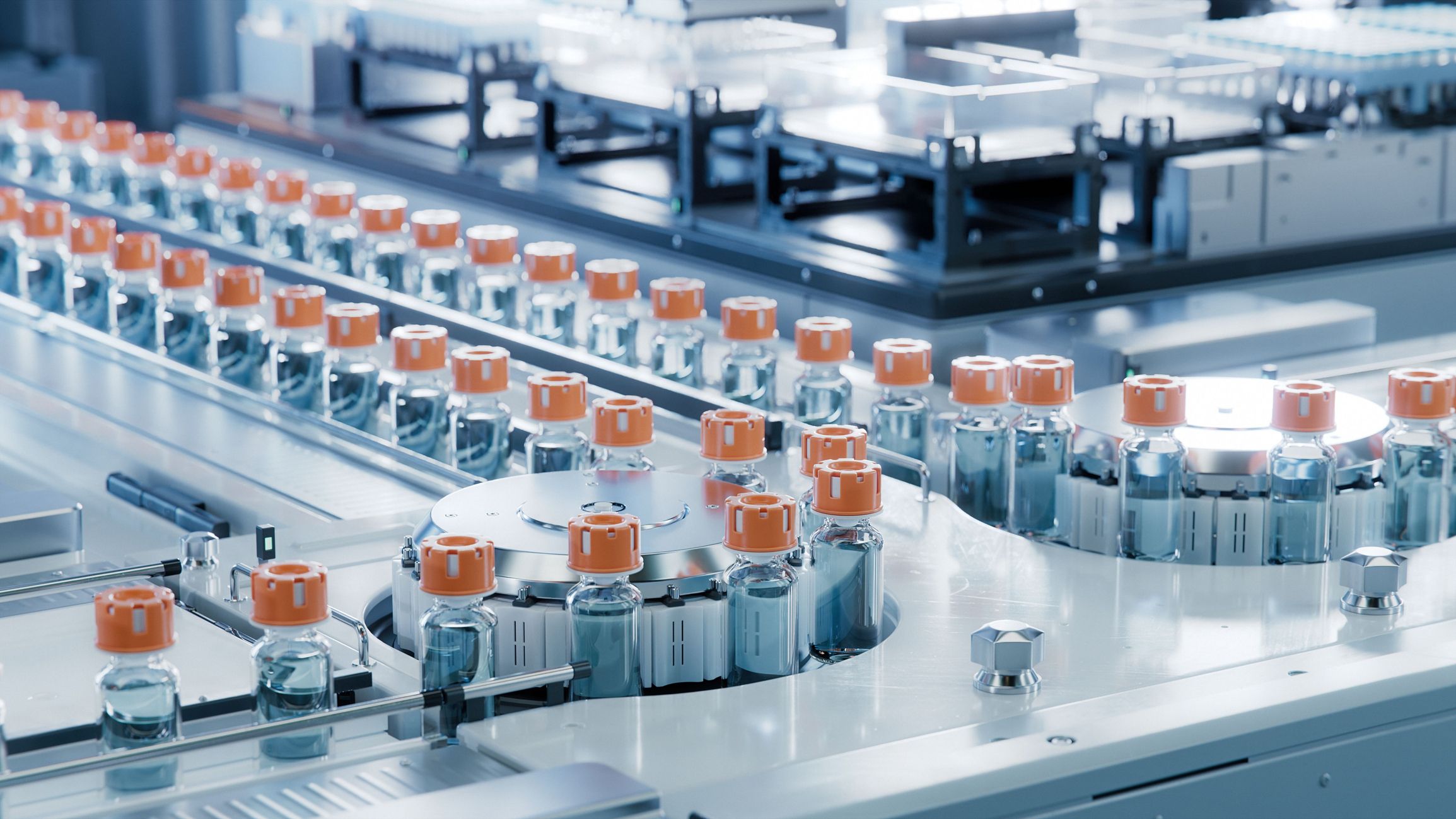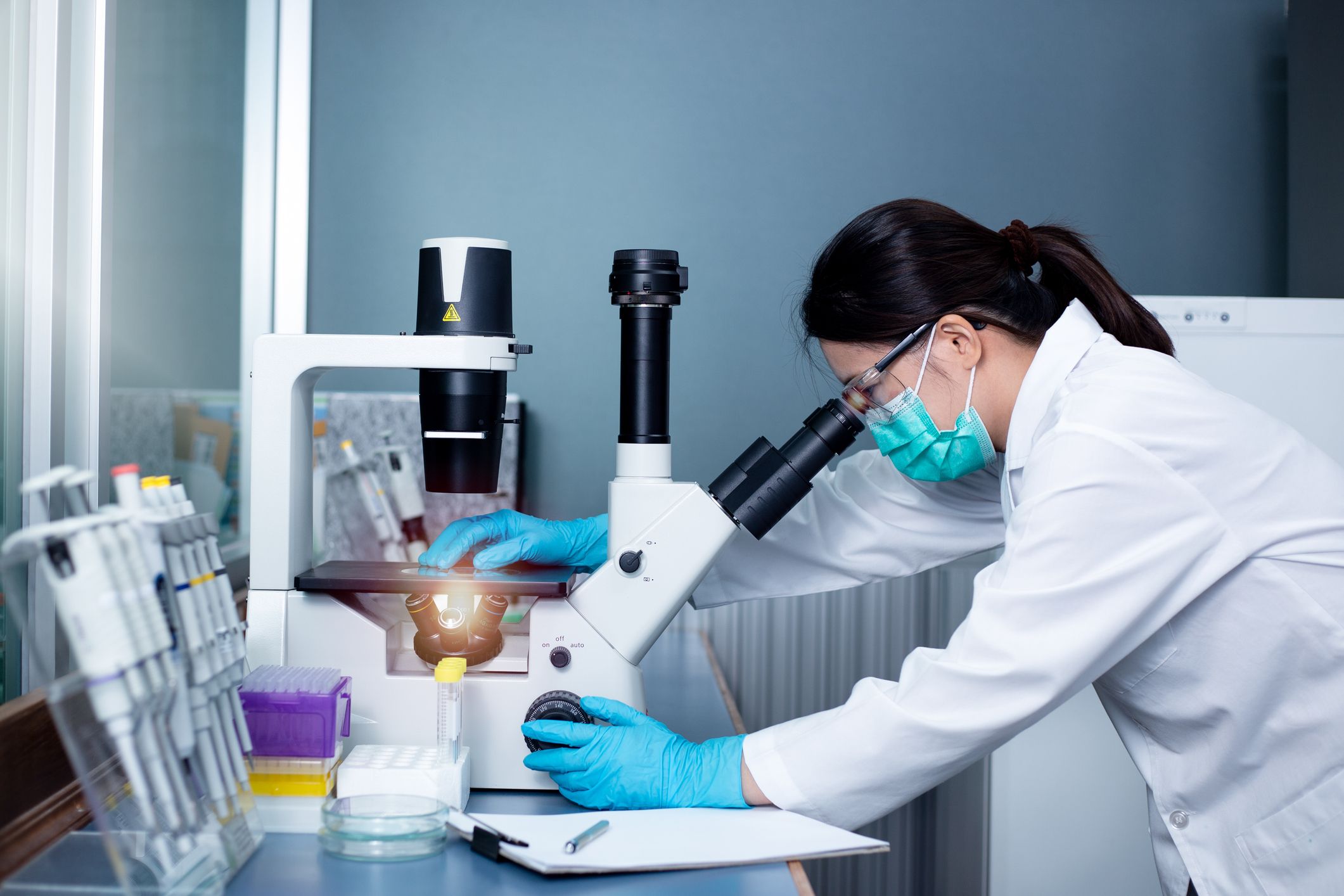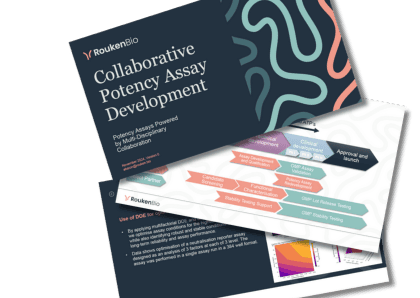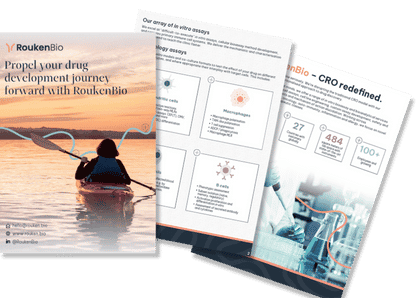Potency Assays: The Cornerstone of Biotherapeutic Development
Read the first installment of our Building your Bioassay blog series with Quantics Biostatistics!

|
October 28, 2024
|
6 min read
Bioassays are pivotal in the development of safe and effective biotherapeutics. From early-stage research to commercial release, these methods play an essential role in evaluating different aspects of biotherapeutics. This blog sets the stage for understanding the wide-ranging application of bioassays in biotherapeutic development, while subsequent posts will delve into the more technical aspects of developing the most critical bioassay of all – the potency assay.
What is a bioassay?
The word bioassay is derived from the Greek word bios, meaning life, and the Old French word essai, meaning a trial or test. In scientific contexts, a bioassay is a laboratory procedure that uses a living system to measure the biological activity of a substance. This living system may be whole animals, although their use is diminishing due to cost, throughput, performance, regulatory expectations and of course, ethical issues in favour of alternative approaches.
Ex-vivo bioassays include cells or tissue from either human or animal donors and provide the benefit of similarity to the physiological environment but suffer from donor-to-donor variability and challenges sourcing cells and tissue. Clonal cell lines, derived from tumours or engineered for specific purposes, offer several advantages as biological substrates for bioassays and unlike ex-vivo approaches, a clonal cell line provides greater consistency, reproducibility and control to yield a well-characterised platform for testing. In these bioassays, cells are incubated with a test substance for minutes to several days and biological responses are recorded such as cell proliferation, cell killing, antiviral activity, differentiation, cytokine secretion, enzyme activation or reporter gene expression.
Bioassays as an essential tool for biotherapeutic development
Bioassays play a critical role throughout biotherapeutic development. In the early stages they are employed to explore disease mechanisms, identify potential therapeutic targets, and evaluate the effect of target modulation to provide early validation of therapeutic potential.
As development advances, we use bioassays to screen candidates and optimise leads by assessing various biological activities and interactions. While bioassays are broadly applied to assess wide ranging biological functions, as development progresses, it also becomes important to quantitatively measure the strength of biological activity. Bioassays specifically designed for this purpose are referred to as potency assays. Ultimately, the potency assay becomes crucial for long-term quality control, ensuring the safety and efficacy of every batch of biotherapeutic released to the market.

The potency assay, a special type of bioassay
A potency assay has distinct performance characteristics and control elements that set it apart from other types of bioassays. Whilst this potency assay may share many things in common with other bioassays, these methods are specifically designed to:
Reflect the primary Mechanism of Action (MOA):
The potency assay is closely tied to the primary mechanism of action of the biotherapeutic, ensuring that it accurately assesses the therapeutic effect related to the intended biological target. ICH Q6B expects that ‘a correlation between the expected clinical response and the activity in the biological assay should be established in pharmacodynamic or clinical studies’. However, it is essential to recognise the inherent complexities in achieving this correlation, especially for biological products.
While ICH Q6B allows for flexibility based on scientific rationale, it does not mandate a strict one-to-one correlation between the potency assay and clinical outcomes. This nuance highlights that the selection of the most appropriate assay system is often the most challenging aspect of potency assay development. To address this, developers may build a rationale for their potency assay selection based on earlier development activities, creating a strategic narrative that aligns the chosen potency assay with the expected clinical outcomes. This approach is particularly crucial in cases involving complex modalities, where correlating a single potency assay to a clinical output can be exceedingly difficult. The development of a well-defined narrative, supported by appropriate clinical assays, can strengthen the justification for the selected potency assay(s) and provide a more comprehensive understanding of its relevance to the product's overall therapeutic efficacy.
Quantify Strength of Biological Activity:
A potency assay measures the intensity of the biological activity of the biotherapeutic, providing a precise quantification of its effectiveness. ICHQ6B defines biological activity as ‘the specific ability or capacity of the product to achieve a defined biological effect’ and potency as ‘the quantitative measure (expressed in units) of biological activity based on the attribute of the product which is linked to the relevant biological properties’.
Indicate Stability:
Potency assays function as a stability-indicating assay and must be capable of detecting changes in potency over time, which is crucial for ensuring product consistency. ICH Q2(R2) defines a stability-indicating assay as ‘a validated quantitative analytical procedure that can detect changes in relevant quality attributes of a drug substance or drug product during storage.’. ICHQ5C states that ‘When the intended use of a product is linked to a definable and measurable biological activity, testing for potency should be part of the stability studies.’
Meet Regulatory Standards:
Potency assays must adhere to strict regulatory requirements in terms of ongoing performance characteristics and validation requirements, to ensure that each lot of the product is both safe and effective. When submitting a marketing application for a new biotherapeutic, ICH Q6B mandates that, ‘A relevant, validated potency assay should be part of the specifications for a biotechnological or biological drug substance and/or drug product’. The term 'validated' is particularly significant here. According to ICH Q2 (R2), ‘The objective of validation of an analytical procedure is to demonstrate that the analytical procedure is suitable for the intended purpose.’. This guideline outlines essential performance characteristics for potency assays, such as specificity, working range, accuracy, and precision, which are fundamental to validating the assay's reliability and suitability for its purpose.
When to start developing the potency assay
Potency assay development should begin early, ideally during preclinical development as part of product characterisation. Early initiation is critical as the most significant decision (and risk) in potency assay development is selecting an assay that accurately reflects the product’s mechanism of action (MOA). This decision requires building a strong scientific rationale around the assay’s selection.
For example, if the biotherapeutic targets IL-4R, a signalling reporter assay may seem like an appealing option due to its simplicity. However, this simplicity comes with the challenge of demonstrating a correlation between the assay results and clinical efficacy. To mitigate this risk, it's important to incorporate in vitro and in vivo secondary readouts (such as the downstream effects of blocking IL-4 signalling) that are linked to clinical outcomes. By establishing a correlation between the assay’s results and the therapeutic’s efficacy, a comprehensive data package can be developed. This data package also guides the development of clinical pharmacodynamic (PD) assays and biomarkers, ensuring a cohesive strategy from preclinical development through clinical validation.
The biggest challenge lies not just in developing the assay itself but in ensuring the right assay is chosen. Early attention to the potency assay allows for the systematic collection of data, ensuring that the rationale for assay selection is clear and scientifically sound. This is crucial for regulatory approval, as a well-supported assay selection is more likely to be accepted by regulators.
Another major benefit of initiating assay development early is the continuity it provides. By using a potency assay throughout development, you build a historical dataset that strengthens your ability to assess product quality and manage process changes without introducing the additional complexity of switching assays.

Applications of potency assays
Chemistry, Manufacturing, and Control (CMC) activities refer to the comprehensive set of activities required to ensure that a biotherapeutic is consistently manufactured at a high quality and is safe, effective, and stable for its intended use. CMC activities typically start at the point that a lead candidate is selected, which marks that transition from exploratory research towards a phase of control and structure where the focus becomes the production of a consistent, scalable, and regulatory-compliant product. It is with the start of CMC activities that the importance of potency assessment really begins to emerge.
Potency assays serve multiple purposes during CMC activities, providing key insights into the efficacy, stability, and quality of a product. The primary uses of potency assays are described in the table below.
Use | Description |
Process Development | Potency assays help track biological activity across various stages of manufacturing. This enables developers to understand how different conditions, such as changes in formulation or purification methods, may affect the potency of the biotherapeutic. |
Process Comparability | As the manufacturing process is refined and scaled, potency assays are used to determine whether changes introduced influence the biological activity of the product and for this reason, are essential for maintaining consistency throughout clinical development and beyond. |
Process Intermediates | Intermediate materials produced during the manufacturing process may be evaluated for potency. These assessments guide important production decisions, such as whether to pool batches or reprocess certain lots to meet final release specifications. |
Stability | Potency is a key indicator of stability for biotherapeutics and robust stability studies not only establish appropriate shelf life but identify when functional degradation may occur allowing appropriate risk assessments of product stability to be made. |
Reference Standard Qualification | Potency assays are critical for the qualification of new Reference Standards, ensuring long-term consistency across multiple individual batches. |
Lot Release | Potency assays are essential for batch release testing, ensuring that each production batch meets predefined potency criteria. Potency assays are critical as they alone provide the measure of biological activity. |
Early phase potency assays
While this blog focuses on cell-based assays and their role as potency assays, ICH Q14 describes, ‘it’s common for the analytical technology for the measurement of potency to evolve during the product lifecycle for biologics, with ELISA-based technologies often being initially utilised prior to the subsequent development of a more technically challenging specific cell-based assay’. Early in clinical development, such as in phase 1, simpler methods like ELISA are often used due to their cost-effectiveness and ease of performance. However, ELISAs are typically surrogate methods, delivering only a measure of biological interactions, falling short of the critical measurement of the biological activity, which becomes essential as product development proceed towards later clinical stages.
In certain cases, arguments for employing surrogate assays to measure potency may be made throughout clinical development. This is possible when there’s a well-established correlation between the results obtained between the surrogate assay’s measurements and the product’s actual biological activity. This may be necessary in cases where direct measurement of a biological effect is complex, costly, or unfeasible and the surrogate assay can serve as a practical alternative if its results reliably reflect the relevant biological function of the product.
Expectations for potency assay performance characteristics
The extent to which the performance of the potency assays is characterised depends on factors such as the stage of development it is employed, the assay’s intended use, its complexity, and the criticality of the results. Clearly defining these performance expectations is crucial when designing a strategy for potency assay development. Performance characteristics are determined and confirmed in studies often termed, qualification studies and validation studies, respectively.
Given the importance of accurate potency estimates for ensuring the safety and efficacy of biotherapeutics, regulatory guidelines detail the performance characteristics required of ‘full’ validation of a potency assay. The table below, adapted from ICH Q2(R2) (2022), summarises these key performance characteristics:
Performance Characteristic | Description |
Intermediate Precision | Reflects within-laboratory variations due to factors such as different days, operators, and equipment. |
Repeatability | Measures precision under consistent conditions over a short time interval (also known as intra-assay precision). |
Accuracy | Indicates how closely the measured value matches an accepted reference or true value. |
Reportable Range | Defines the range of values from the lowest to the highest that can be reported with suitable accuracy, precision, and linearity (the ability of the assay to produce results that are directly proportional to the concentration or amount of the analyte across the reportable range). |
Robustness | Confirms the assay's ability to maintain performance despite deliberate variations in procedural parameters. |
Specificity / Selectivity (Stability Indicating) | Describes the assay's ability to accurately measure the active substance without interference from other substances or degradation products. |
Whilst testing in a fully validated potency assay is mandated by regulators for the lot release of marketed products and stability testing of biotherapeutics (ICH Q6B, 1999), the specific phase-appropriate validation requirements earlier in product development are less clearly defined. Here, phase-appropriate validation, often referred to as qualification, represents an abbreviated version of full validation.
The scope of assessments between qualification and full validation differs significantly. Qualification studies are designed to evaluate key performance parameters such as specificity, linearity, accuracy, and precision but unlike full validation, do not have predetermined performance specifications that must be met. While qualification studies cannot technically ‘fail’ due to the absence of predefined criteria, they are essential in identifying whether the assay meets general expectations and whether the assay is fit for its intended purpose. This phase-appropriate approach allows flexibility to adjust and refine the assay as data emerges. In this way, qualification serves as a foundation for determining the assay's reliability before moving into the more stringent process of full validation, where specific performance specifications are required to pass.
By understanding these distinctions, developers can appropriately plan the timing and extent of assay validation activities to meet both regulatory requirements and product development goals.
References:
ICH. Q2(R2) Validation of Analytical Procedures. Mar 2022.
ICH. Q6B Specifications: Test Procedures and Acceptance Criteria for Biotechnological/Biological Products. Mar 2022.
ICH. Q5E Comparability of biotechnology/biological products subject to changes in their manufacturing process. Nov 2004.
ICH. Q14 Analytical Procedure Development. Mar 2022.
Join our community of curious minds on LinkedIn
🗓️ Stay informed with our monthly scientific newsletter, published on LinkedIn on the last Wednesday of each month.
These editions bring you the latest in drug development breakthroughs, industry trends, and expert insights from the brilliant minds at RoukenBio.
Subscribe today on LinkedInPartner with RoukenBio for GMP-ready potency assay development
Learn more about our custom analytical method development, potency assay development lifecycle with case studies and data.
Download our slidedeck

